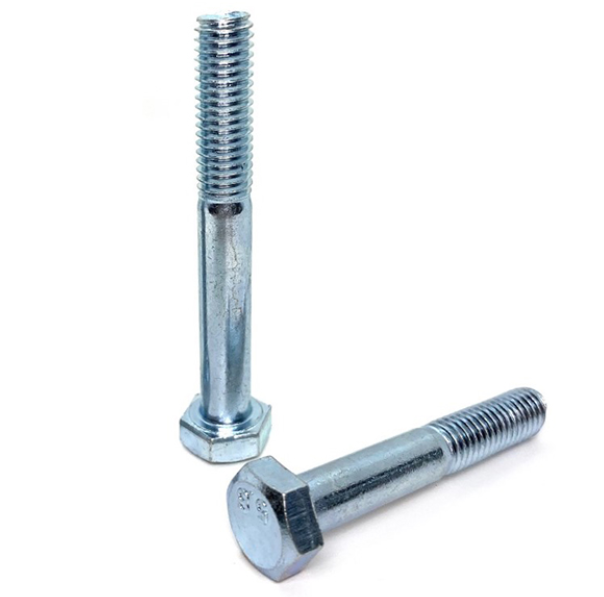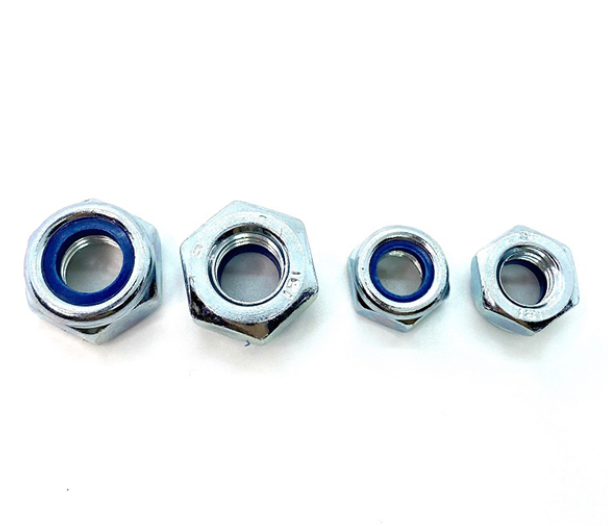Copyright © 2021 Kinfast All rights reserved. 粤ICP备06034726号 Site Map Powered by iwonder.cn
- TEL: +86-755-8347-9123
- E-MAIL: info@kfproduct.com
A nut is a small metal object with a hole in the middle that has a corrugated hole. These curved holes are known as threads. Nuts are used as a fastening device. It is important to note that evens though nuts are used as a fastening device, they cannot be used without bolts. To understand this, we have to understand the shape of walnuts. The outer part of its body can be shaped either way, but it is mostly hexagonal cap or circular in shape.
The inside shape is always circular; this is because this is where the bolt stem fits, and the bolt stem is always cylindrical in shape so that it can rotate easily and fit into the threads. The two partners (i.e., nuts and bolts) are held together by a combination of friction of their thread, a slight stretch of the bolt, & compression of the part to join together. The nuts come with a separate locking mechanism that prevents machine parts from loosening due to the vibration of the parts or parts that they joined. They are mostly of a circular cross-section.
Bolts are metal objects consisting of a cylindrical trunk with grooves such as grooves that are similar to the grooves present inside a nut. In addition to this threaded stem, there is also a forward current, which helps hold the fasten together. As stated in the paragraph above, a bolt goes into a hole in a circular thread of a nut, where the bolt grooves fit perfectly with the nut grooves. Then, at rotational speed, the bolt nut is able to move the bolt up and over.
Some bolts have this threaded nature with their trunk; some have only the last part of its stem. There is no clear distinction between bolts & nuts, and one can easily get confused between them, but standardly, the bolts do not pass through a threaded area and are fastened with the help of bolts; however, Used for components that have already been damaged.
A bolt head also has a wide variety of shapes, and we need to follow the same rules as we discussed in the above paragraph. The most common shape for a bolt head is a hexagonal bolt head because this shape provides the most granularity for the devices used in the case of extraction. It is a type of fastener.

S.no | Nuts | Bolts |
1 | A nut is a type of fasteners that are always used with bolts. | The bolt is a solid cylindrical fastener that is used with a nut. |
2 | The nuts are hollow circular cylinders with a circular cross-section. | The bolts are solid cylinders with a circular cross-section. |
3 | They are used as a fastener in conjugation with bolts. | In conjugation with nuts are used to fasten the stuff. |
4 | The materials used to make are usually carbon steel coated with zinc | The material is generally used to make high-grade steel with a large percentage of nickel and chrome. |
5 | They do not have ahead. | They are led to tighten and loosen. |
6 | The nuts experience compressive forces on them and usually fail due to compressive stresses. | They experience tensile forces on it and fail due to tensile stresses. |
7 | There are different types of nuts: Hex Nut, Nylon Insert Lock Nut, Jam Nut, Nylon Insert Jam Lock Nut, Square Nut, Cap Nut, Acorn Nut, T-Nut, Cape Nut, Castle Nut, Wingnut, Flange Nut, Slotted Nut, Coupling nut, etc. | Various types of bolts are anchor bolt, carriage bolt, lift bolt, flange bolt, hanger bolt, hexagon bolt/tap bolt, lag bolt, machine bolt, plow bolt, sex bolt, shoulder bolt, square head bolt, stud bolt, Timber bolt, T-head bolt, toggle bolt, U-bolt, J-bolt, bolt, etc. |
8 | Small metal object with a threaded hole. | There is a threaded cylindrical stem ahead. |
9 | Variety: T-Nut, Cape Nut, Castle Nut, Wingnut. | Variety: Toggle Bolt, U-Bolt, J-Bolt, Lag Bolt. |
10 | The force involved experiences compressive forces. | The force involved experiences tensile forces. |
11 | Nuts have internal threads. | The bolt has external threads. |
12 | They are smaller in size than bolts. | They are larger in size than dry fruits. |
13 | They have a locking mechanism to prevent loosening. | They have no locking mechanism. |

Nuts and bolts are two-term that are easily confused and used incorrectly. However, it is important to get terminology, especially when the person is working with professionals, placing orders, or trying to buy anything from a hardware store.
A screw is again another thing that is sometimes confused with these, but its purpose and use are still clear to most people. Of course, they are both fastening devices and used in conjugation to each other, and thus any confusion can be easily understood.
If you have any questions, please feel free to contact us!